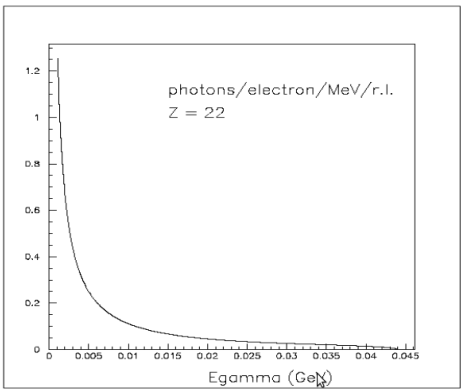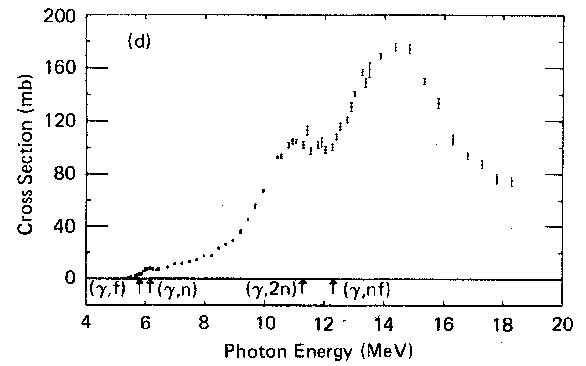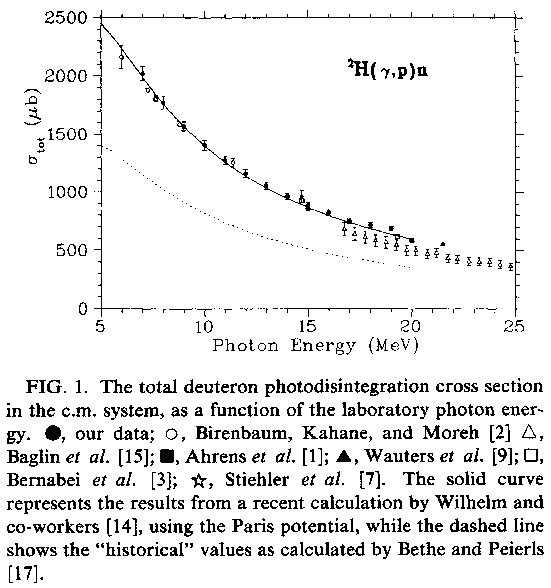Difference between revisions of "Counts Rate (44 MeV LINAC)"
| Line 171: | Line 171: | ||
1) from relativistic kinematic: | 1) from relativistic kinematic: | ||
| + | |||
| + | |||
| + | {| border="1" cellpadding="20" cellspacing="0" | ||
| + | |||
| + | |||
| + | |- | ||
| + | |High Voltage (Volts) | ||
| + | |Counts/5min | ||
| + | |- | ||
| + | |1500 || 563 | ||
| + | |- | ||
| + | |1550|| 949 | ||
| + | |- | ||
| + | |1600 || 1912 | ||
| + | |- | ||
| + | |1650 || 3191 | ||
| + | |- | ||
| + | |1700 || 4557 | ||
| + | |- | ||
| + | |1750|| 6235 | ||
| + | |- | ||
| + | |1800 || 7900 | ||
| + | |- | ||
| + | |1850 || 9789 | ||
| + | |- | ||
| + | |1900 || 12192 | ||
| + | |} | ||
===Calibration factor=== | ===Calibration factor=== | ||
Revision as of 16:44, 3 June 2010
Counts Rate for U238 (12.5 µm Ti converter)
LINAC parameters used in calculations
1) pulse width 50 ps
2) pulse current 50 A
3) repetition rate 300 Hz
4) energy 44 MeV
Number of electrons/sec on radiator
Number of photons/sec on target
bremsstrahlung
in (10,20) MeV region we have about
0.1 photons/electrons/MeV/r.l
radiation length
r.l.(Ti) = 3.59 cm
radiator thickness = 12.5
steps together...
Alex factor (GEANT4 calculation)
Collimation factor is
6.85 % of total # of photons
then, incident flux on target is
Number of neutrons/sec
photonuclear cross section for reaction
J. T. Caldwell et all., Phys. Rev. C21, 1215 (1980):
in (10,20) MeV region the average cross section, say, is:
130 mb
target thickness,
Let's target thickness = 1 mm:
neutrons per fission
2.4 neutrons/fission
steps together...yeild
Worst Case Isotropic Neutrons
checking detector distance
we want:
the time of flight of neutron >> the pulse width
take the worst case 10 MeV neutron:
take the neutron detector 1 meter away:
23 ns >> 50 ps <= time resolution is good
geometrical factor
taking real detector 3" x 2" => S is about 40 cm^2
1 meter away
fractional solid angle = <= geometrical acceptance
Yield
the yield per second:
the yield per pulse:
53.8 neutrons/sec <= this experiment is do able
0.18 neutrons/pulse <= good for stopping pulse
Counts Rate for U238 (25 µm Al converter)
radiation length
r.l.(Al) = 8.89 cm
radiator thickness = 25
Calibration factor
The only difference from calculations above is:
1) radiation length:
3.48 (for 12.5 µm Ti) / 2.81 (for 50 µm Al) = 1.24
Yield
53.8 neutrons/sec * 1.24 = 66.7 neutrons/sec
0.18 neutrons/pulse * 1.24 = 0.22 neutrons/pulse
Counts Rate for Deuteron (12.5 µm Ti converter)
photonuclear cross section for reaction
A. De Graeva et all., Phys. Rev. C45, 860 (1992):
in (10,20) MeV region the average cross section, say, is:
1000 μb
target thickness,
take , liquid (20°C):
Let's target thickness = 10 cm:
angular distribution of neutron
1) from relativistic kinematic:
| High Voltage (Volts) | Counts/5min |
| 1500 | 563 |
| 1550 | 949 |
| 1600 | 1912 |
| 1650 | 3191 |
| 1700 | 4557 |
| 1750 | 6235 |
| 1800 | 7900 |
| 1850 | 9789 |
| 1900 | 12192 |
Calibration factor
The only difference from calculations above is:
1) cross section:
1000 μb (D) / 130 mb (238U) = 1/130
2) target thickness:
3) neutrons per reaction:
1 neutron (D) / 2.4 neutrons(238U) = 1/2.4
4) geometrical factor:
assume for now is 1
total calibration factor is:
Yield
saying all other factors is the same =>
the yield per second :
the yield per pulse:


